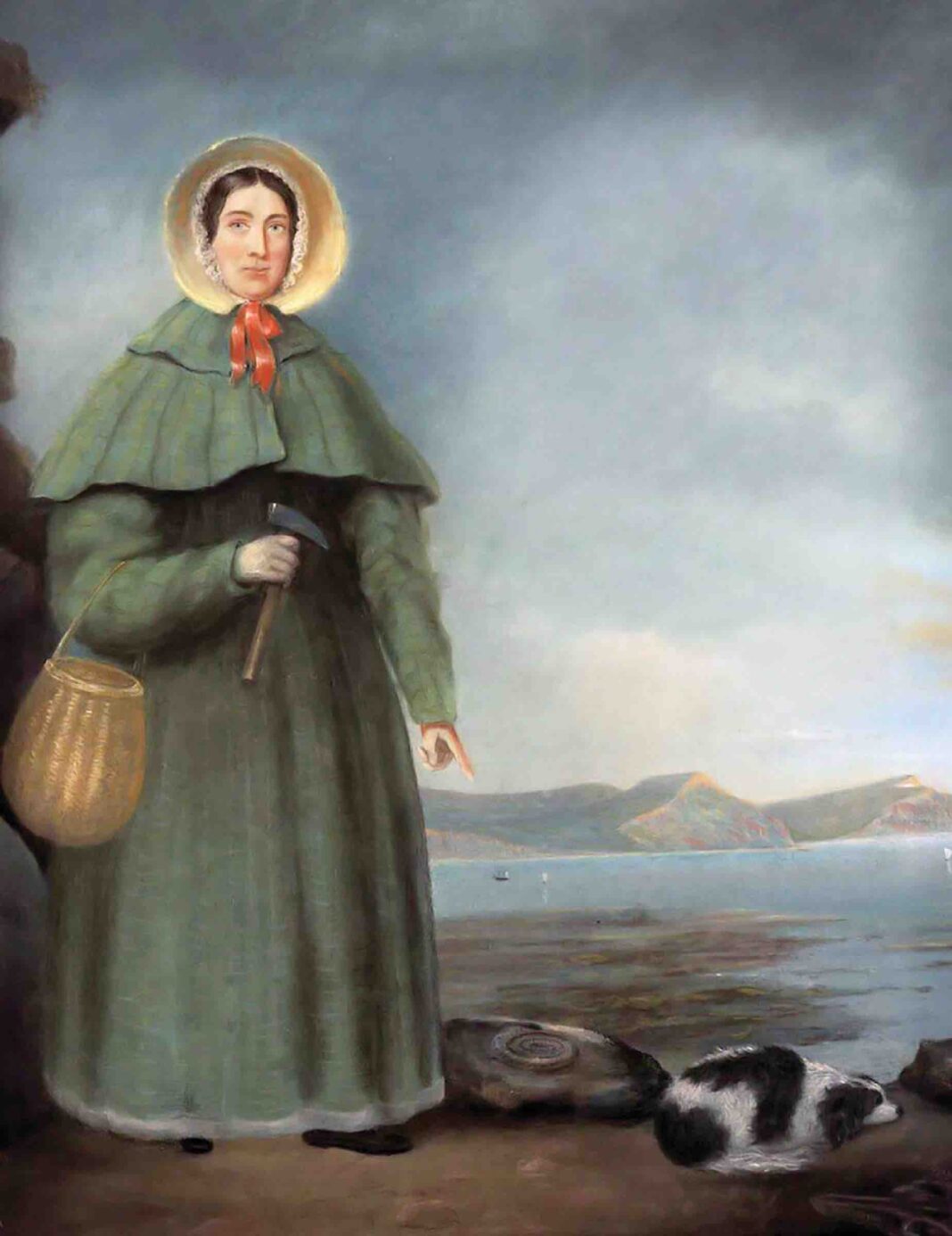Posthumous painting of Mary Anning (1847) by B. J. Donne
IanDagnall Computing / Alamy Stock Photo
Oh, Mary Anning. That stubborn young spinster gave us the dinosaurs.
When she was born in 1799, Darwin hadn’t even been conceived yet, let alone his theories of evolution. If your beachcombing turned up something that hadn’t been seen before, you called it a monster.
Fossil hunting was just coming into vogue, but it was not a pastime for little girls—except Mary. Her family lived in Lyme Regis, on the southwest coast of England, where you couldn’t take a step without tripping over an ammonite. Her collection grew, and she went deeper into the rocks onshore. At age twelve, she and her father excavated the first complete ichthyosaur (“fish lizard”); after he died, she alone would discover the first plesiosaur (“almost a lizard”) and the first pterodactyl. The fossilized skeletons looked so bizarre that experts accused her of faking them. Selling her finds was, after all, how she supported her mother—always a struggle, especially as she had to prove herself in an exclusionary field of male scientists.
Eventually Anning’s discoveries helped prove that these “monsters” once populated the seas, land, and air. She inspired scientists to define the age of the dinosaurs, though she herself was not admitted to any of their clubs. The money trouble persisted until her death at age forty-seven.
But she tamed the monsters.


































